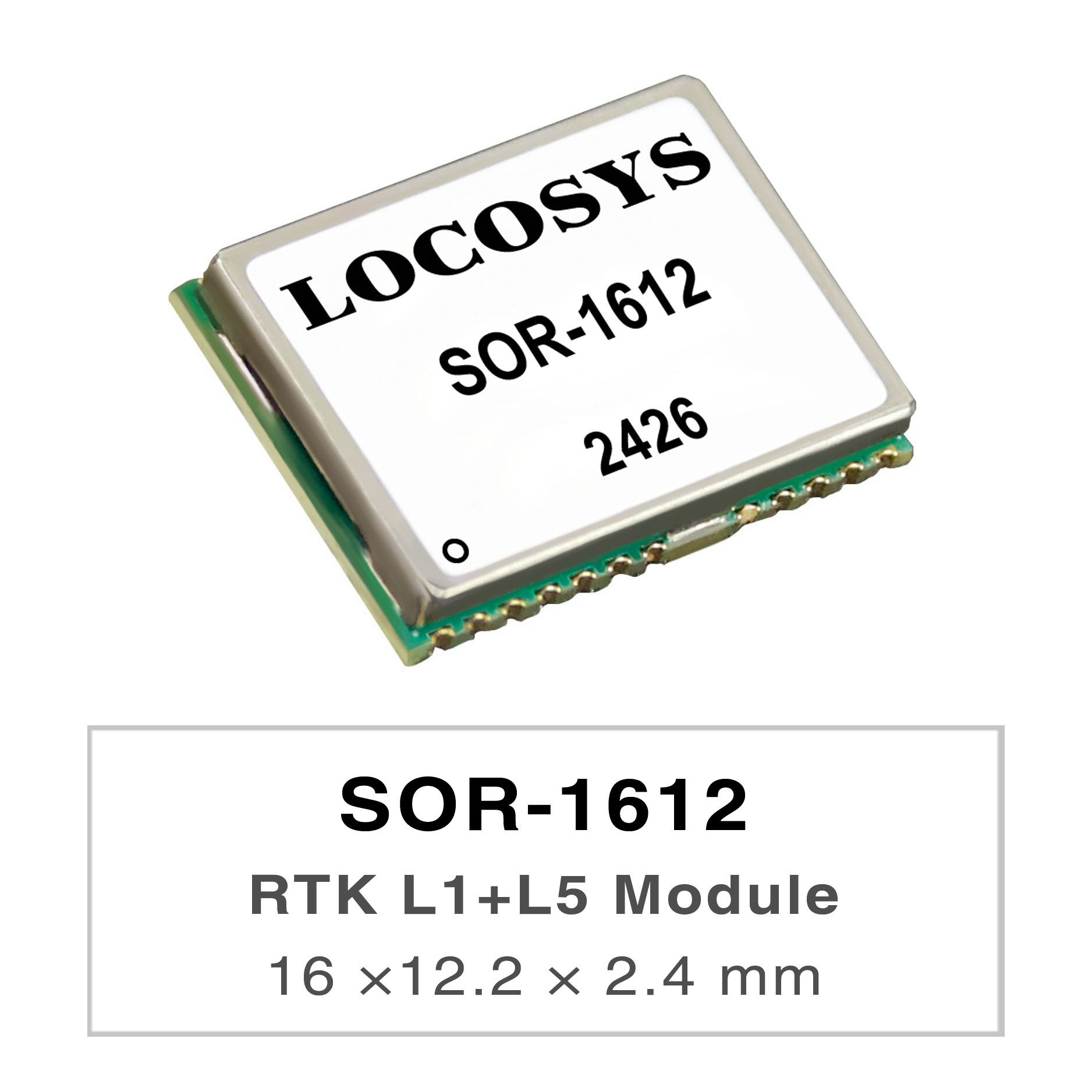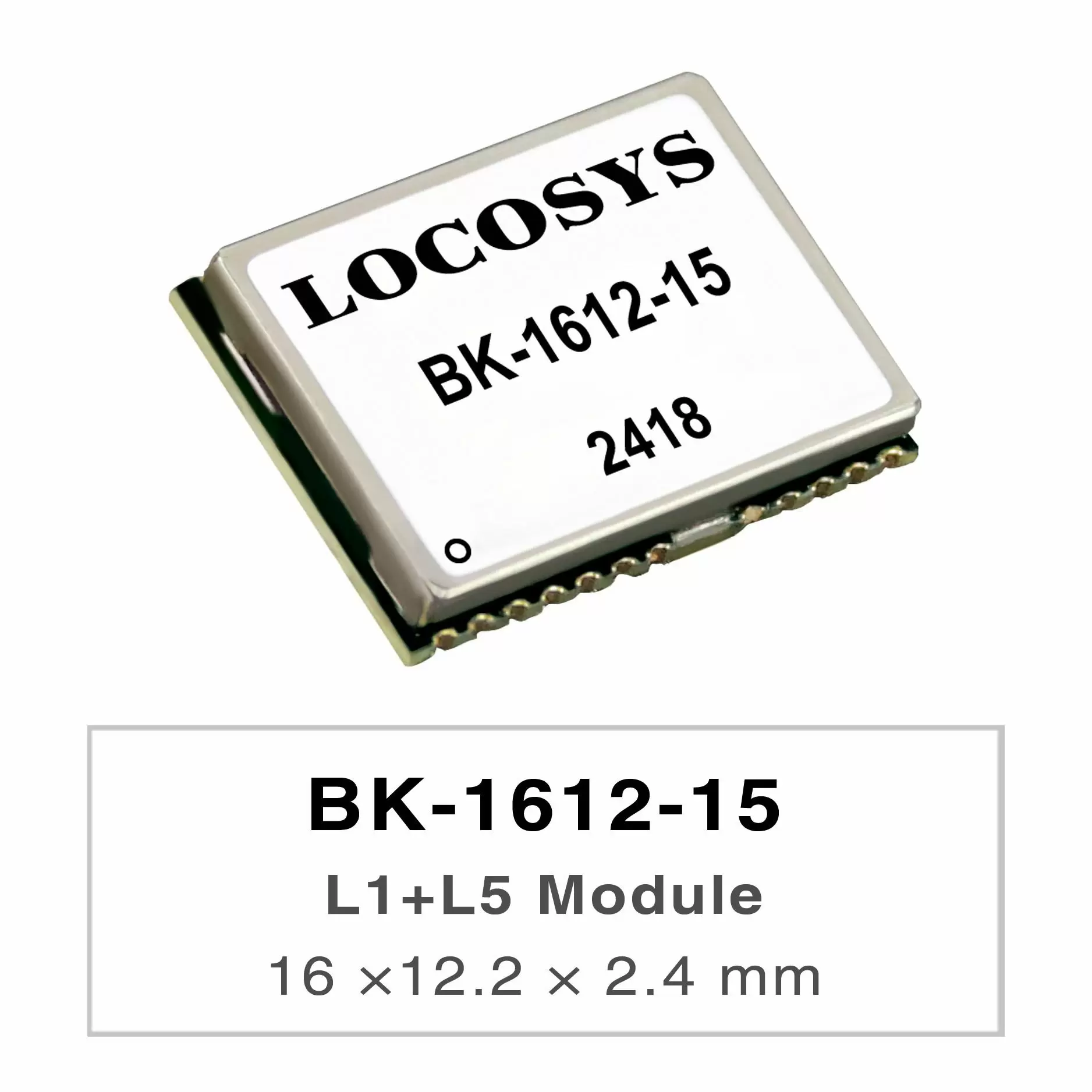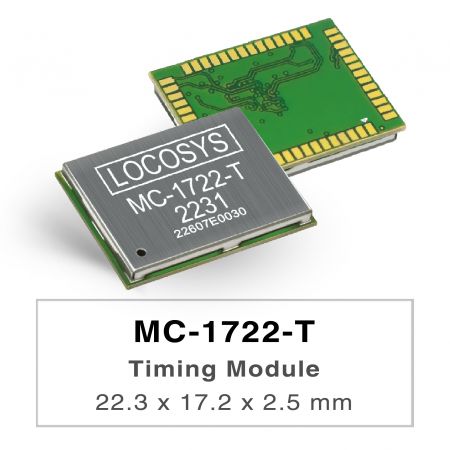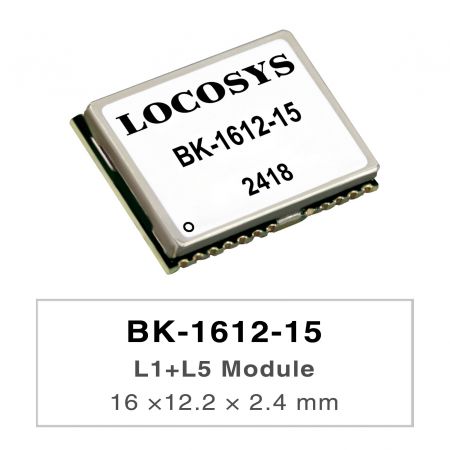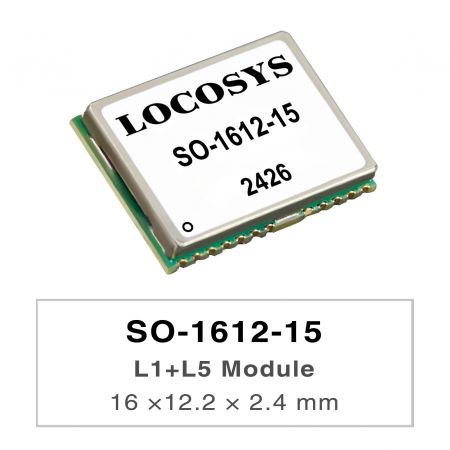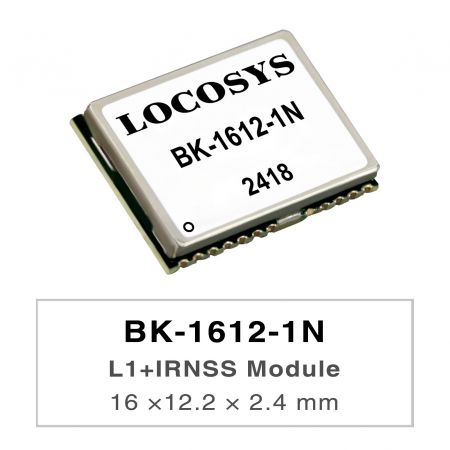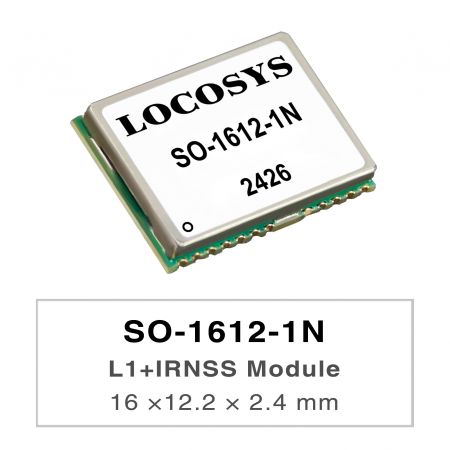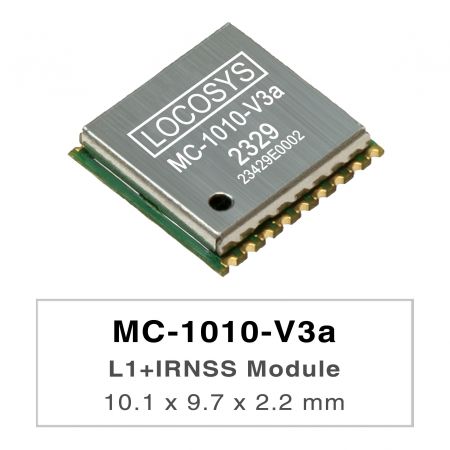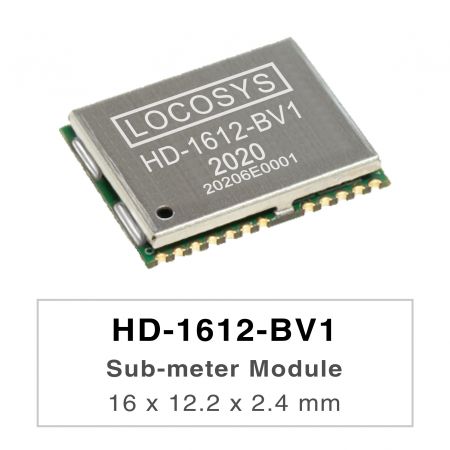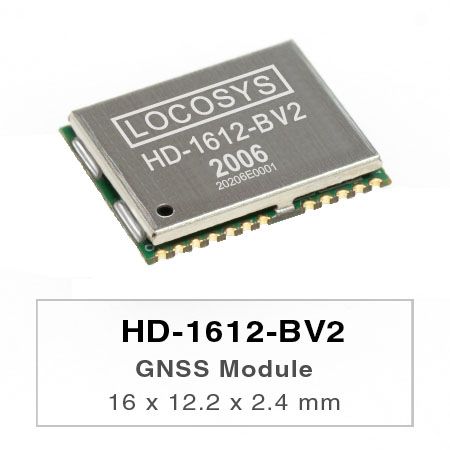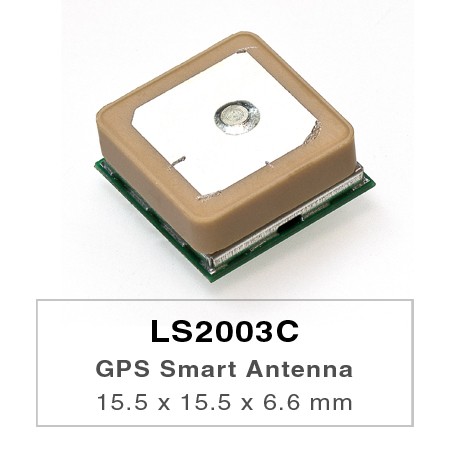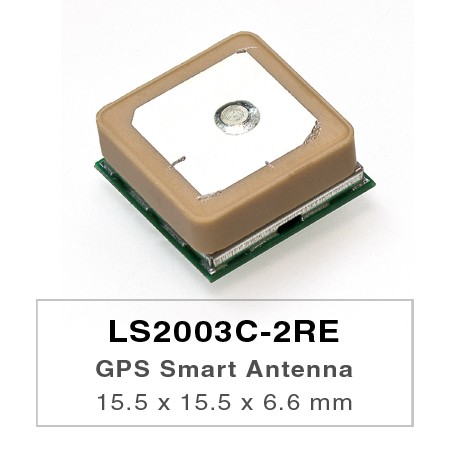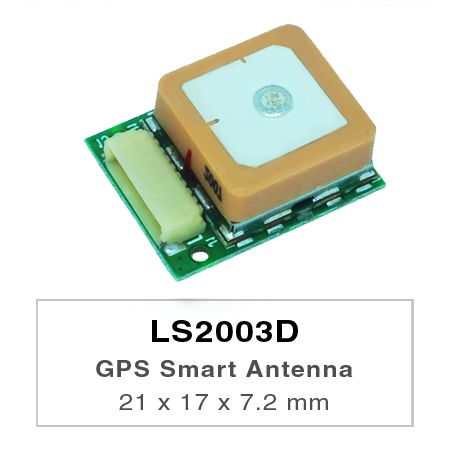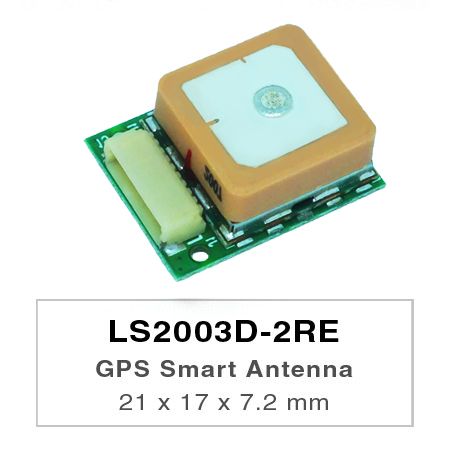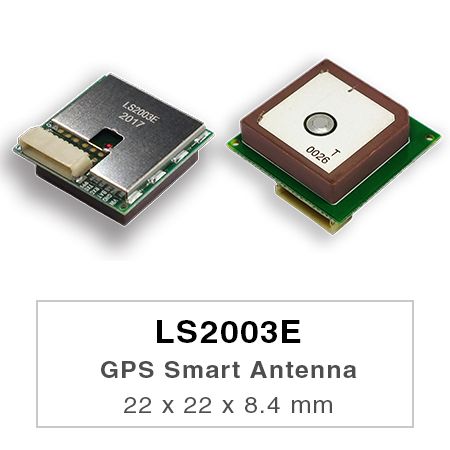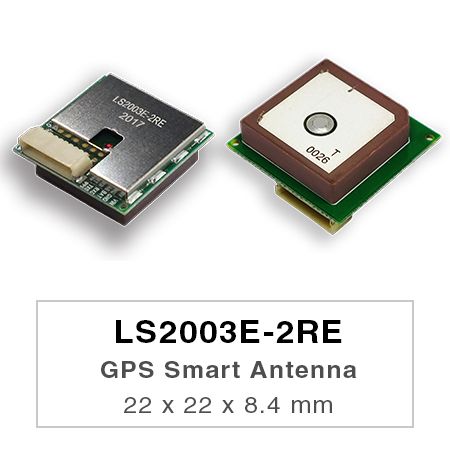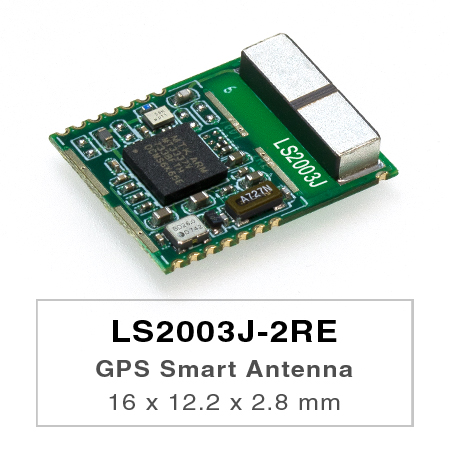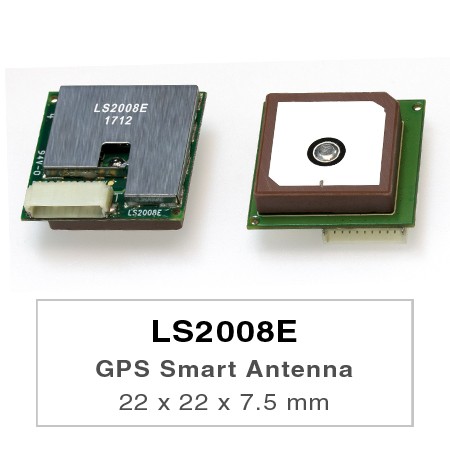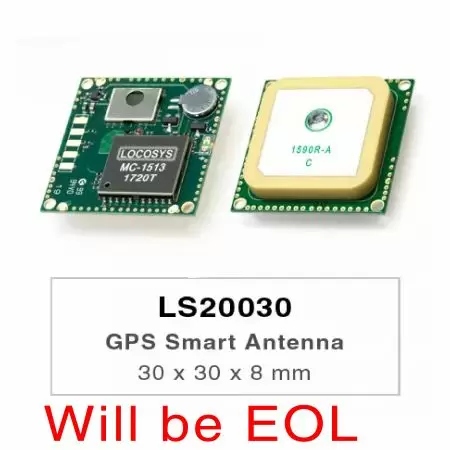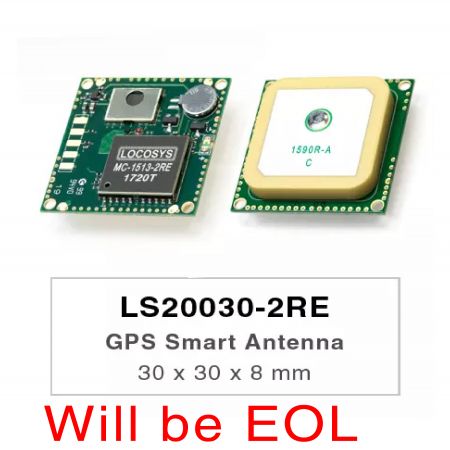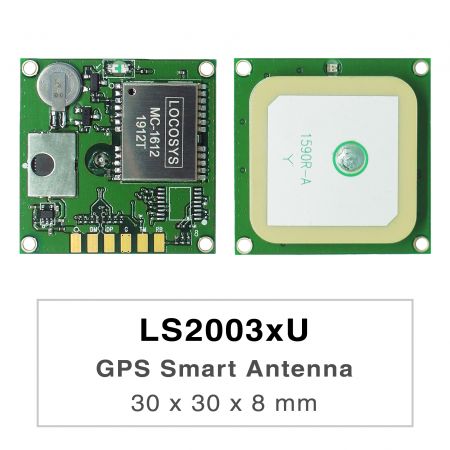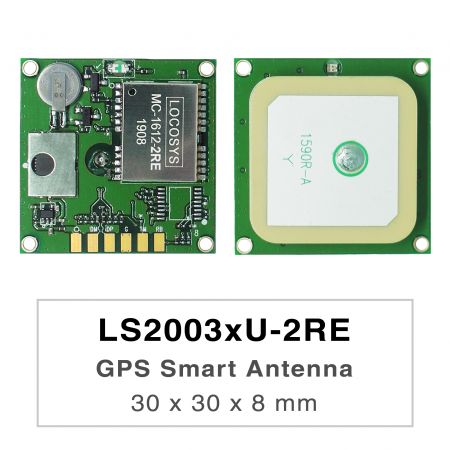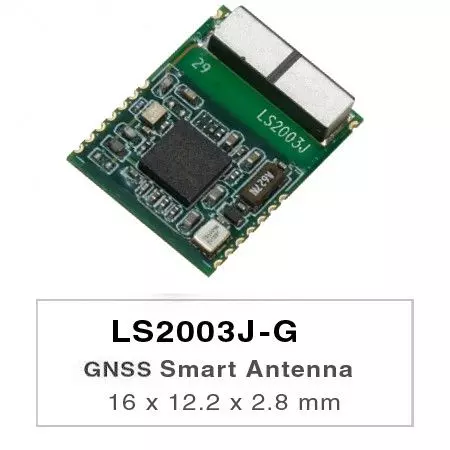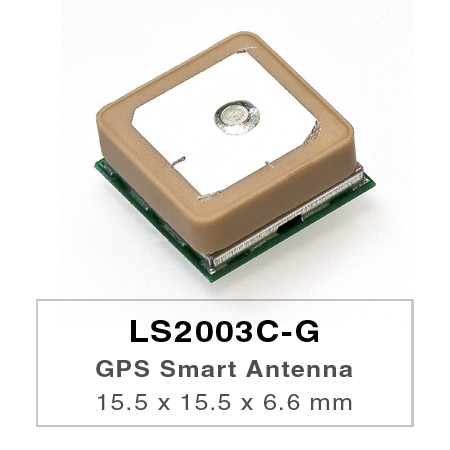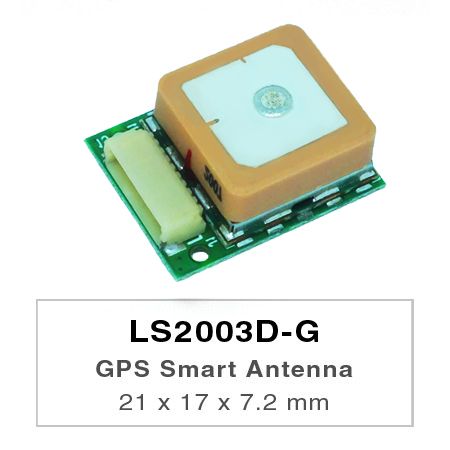MC-1722-T 是一款高性能的L1 和L5 双频多频GNSS 模组,专为定时应用而设计。该模组支持GPS、GLONASS、北斗(BeiDou)、GALILEO 和QZSS 的同时接收,以提高可用性和可靠性。
更多
BK-1612-15 是一款支持双频和多模式的接收模组。它内建高度集成的GNSS 接收晶片,支持多频段和多系统的cm4f(主频350MHz,22nm 技术)芯片,并支持第三代北斗卫星导航系统(BDS-3)。此外,它能够在所有频段上追踪所有全球民用导航系统(GPS、GLONASS、GALILEO、BEIDOU、QZSS 和SBAS)。
BK-1612-15 模组基于先进的BDS-3 架构,集成了多频段和多系统的GNSS 射频和基带。这种新设计的架构使得这颗单晶片在不需要地面增强站的修正数据的情况下,实现了亚米级定位精度,并提高了灵敏度,对抗干扰和多径效应的能力更强,能在复杂环境中提供强健的服务。
BK-1612-15 模组内含定位引擎,具有高灵敏度、低功耗和快速的TTFF。其卓越的冷启动灵敏度使其能够在弱信号环境下自主获取、跟踪并获得定位解决方案。接收器的卓越跟踪灵敏度使其在几乎所有户外应用环境中保持连续的定位覆盖。高性能的信号参数搜索引擎每秒可测试1600 万个时间频率假设,提供卓越的信号获取和TTFF 速度。
更多
SO-1612-15 是一款双频GNSS 定位接收模组,能够在所有频段上追踪所有全球民用导航系统(BDS、GPS、GLONASS、Galileo、QZSS、IRNSS 和SBAS)。内建高度集成的GNSS 接收晶片,支持第三代北斗卫星导航系统(BDS-3)。
SO-1612-15 模组基于先进的BDS-3 架构,集成了多频段和多系统的GNSS 射频和基带。这种新设计的架构使得这颗单晶片在不需要地面增强站的修正数据的情况下,实现了亚米级定位精度,并提高了灵敏度,对抗干扰和多径效应的能力更强,能在复杂环境中提供强健的服务。
SO-1612-15 模组内含CXD5610GF 定位引擎,具有高灵敏度、低功耗和快速的TTFF。其卓越的冷启动灵敏度使其能够在弱信号环境下自主获取、跟踪并获得定位解决方案。接收器的卓越跟踪灵敏度使其在几乎所有户外应用环境中保持连续的定位覆盖。
更多
BK-1612-1N 是一款接收模组,支援双频并可同时接收GPS、GLONASS、GALILEO、BEIDOU、QZSS 和NavIC 多模组。它内建高度集成的接收晶片,支持多频带和多系统的cm4f(主频350MHz,22nm技术)晶片。此外,它能够同时追踪所有全球民用导航系统(GPS、GLONASS、GALILEO、BEIDOU、QZSS、NavIC)在L1 和L5 频段的信号。
BK-1612-1N 模组基于先进的NavIC 架构,集成了多频带和多系统的GNSS RF 和基带。这一新设计的架构使得该单晶片可在无来自地面增强站的修正数据下实现亚米级定位精度,并具有更高的灵敏度,提升了抗干扰性和多径效应的抗性,在复杂环境中提供稳健的服务。
BK-1612-1N 模组具有高灵敏度、低功耗和快速TTFF(首次定位时间)。其优越的冷启动灵敏度使其能够在弱信号环境中自主获取、跟踪并确定位置。接收器的出色跟踪灵敏度使其能在几乎所有户外应用环境中持续提供定位覆盖。高性能的信号参数搜索引擎每秒可测试1600万个时间频率假设,提供卓越的信号获取和TTFF 速度。
更多
更多
LOCOSYS MC-1010-Vxx 系列是高性能双频GNSS 定位模组,能够追踪所有全球民用导航系统。它们采用了12nm 制程并集成了高效的电源管理架构,实现了低功耗和高灵敏度。此外,支持L1 和L5 频段信号的同时接收,减少了多径延迟,实现亚米级定位精度。
这些模组支持混合星历预测,实现更快的冷启动。其中一种是自生成的星历预测(称为EPOC),无需网络协助和主机CPU 的介入。该预测有效期为3 天,当GNSS 模组开机并且卫星可用时会自动更新。另一种是伺服器生成的星历预测(称为EPO),该预测来自互联网伺服器,有效期为14 天。这两种星历预测都存储在模组的闪存中,冷启动时间小于15 秒。
MC-1010-V3x 配合有源天线,可符合AIS 140 标准中的灵敏度规范。这是设计符合AIS 140 跟踪应用的客户的最佳解决方案。
更多
LOCOSYS MC-1612a-Vxx 是一款高性能双频GNSS 定位模组,能够追踪所有全球民用导航系统。该模组采用了12nm 制程并集成了高效的电源管理架构,实现了低功耗和高灵敏度。此外,支持L1 和L5 频段信号的同时接收,减少了多径延迟,实现更准确的定位。
该模组支持混合星历预测,实现更快的冷启动。其中一种是自生成的星历预测(称为EPOC),无需网络协助和主机CPU 的介入。该预测有效期为3 天,当GNSS 模组开机并且卫星可用时会自动更新。另一种是伺服器生成的星历预测(称为EPO),该预测来自互联网伺服器,有效期为14 天。这两种星历预测都存储在模组的闪存中,实现更快的冷启动。
MC-1612a-V3b 模组的射频前端专门设计,以符合AIS 140 标准中的灵敏度规范。这是设计符合AIS 140 跟踪应用的客户的最佳解决方案。
更多
LOCOSYS HD-1612-BV1 is a high-performance GNSS positioning module that is capable of tracking all global civil navigation systems (GPS, QZSS, GLONASS, BEIDOU and GALILEO).
Besides, it can receive sub-meter level augmentation service from QZSS L1S signal and sends disaster information at 4-second intervals.
The module integrates efficient power management architecture to perform low power and high sensitivity. It is suitable for personal, automotive and marine navigations.
*HD-1612-BV1 supports GPS/GLONASS/GALILEO/BEIDOU/QZSS
更多
LOCOSYS HD-1612-BV2/HD-1612-BV3 are high-performance dual-band GNSS positioning modulesthat are capable of tracking all global civil navigation systems (GPS, GLONASS, BDS, GALILEO, QZSS andIRNSS). They integrate efficient power management architecture to perform low power and high sensitivity.Besides, concurrent reception of L1 and L5 band signals achieves sub-meter position accuracy. They aresuitable for personal, automotive and marine navigations.
The RF front end of HD-1612-BV3 is specifically designed to comply with sensitivity specificationcontained in AIS-140 standard. It is the best solution to those customers that design tracking applications in compliance with AIS-140.
*HD-1612-BV2 supports GPS/GLONASS/GALILEO/BEIDOU/QZSS
*HD-1612-BV3 supports GPS/GALILEO/BEIDOU/QZSS/IRNSS
更多
LS2003C是一个完整的独立GPS天线模组,包括嵌入式贴片天线和GPS接收器电路。 LS2003C 模组使用联发科GPS 多合一芯片MT3339,可以一次获取多颗卫星,同时提供快速的首次定位(Time To First Fix) 和低功耗。此外,即使在都市峡谷和茂密的树叶环境中,它也能为您提供卓越的灵敏度和性能。
该模组支援混合星历预测,实现更快的冷启动。一个是自生产的星历预测(self-generated ephemeris prediction称为EASY),不需要网络协助和主机CPU的干预。这有效期最长为3天,GPS模组上电并且卫星可用时不时自动更新。另一个是从互联网服务器获取的服务器生成的星历预测(称为EPO)。最多14天有效。两个星历预测都存储在板载闪存中,并执行少于15秒的冷启动时间。
无需在分离的GPS有源天线中需要的RF连接器和同轴电缆即可轻松安装。换句话说,降低成本和大小。另外,通过消除加快上市时间分离式GPS天线与模组之间的RF匹配和稳定性的研发工作。此外,它可以直接由锂电池供电,无需任何外部电压常数。因此,LS2003C的微型尺寸和辉煌的性能是将其整合到您的超薄设备中的最佳选择。
更多
LS2003C-2RE是一个完整的独立GPS天线模组,包括嵌入式贴片天线和GPS接收器电路。该模组由联发科GPS最新的MT3337E芯片提供支援一次获取大量卫星,同时提供快速的第一时间固定和低功耗。此外,即使在都市峡谷和茂密的树叶环境中,它也能为您提供卓越的灵敏度和性能。该模组支援自我生成轨道预测,EASYTM,实现更快的冷启动和热启动。 EASYTM不需要网络协助和主机CPU的干预。该预测有效期最长为3天,GPS模组上电且卫星可用时,会自动更新。无需在分离的GPS有源天线中需要的RF连接器和同轴电缆即可轻松安装。换句话说,降低成本和大小。
另外,通过消除分离GPS天线和模组之间的射频匹配和稳定性的研发工作,加快上市时间。此外,它可以直接由锂电池供电,无需任何外部稳压器。因此,LS2003C-2RE的微型尺寸和辉煌的性能是将其整合到您的超薄设备中的最佳选择。
更多
LS2003D是一个完整的独立GPS天线模组,包括嵌入式贴片天线和GPS接收机电路。该模组采用联发科最新的MT3339多合一芯片,可以在其中获取大量卫星同时提供快速的时间到第一次修复和低功耗。此外,它可以为您提供卓越的敏感性和性能,即使在都市峡谷和茂密的树叶环境。
该模组支援混合星历预测,实现更快的冷启动。一个是自生产的星历预测(称为EASY),不需要网络协助和主机CPU的干预。最多3天有效,GPS模组上电时会自动更新卫星可用。另一个是服务器生成的星历预测(称为EPO)互联网服务器最多14天有效。这两个星历预测都存储在板载闪存中记忆并执行冷启动时间少于15秒。
无需在分离的GPS中需要的RF连接器和同轴电缆即可轻松安装有源天线。换句话说,降低成本和大小。另外,通过消除加快上市时间分离式GPS天线与模组之间的RF匹配和稳定性的研发工作。此外,它可以直接由锂电池供电,无任何外部电压常规。因此,LS2003D的微型尺寸和辉煌的性能是将其整合到您的超薄设备中的最佳选择。
更多
LS2003D-2RE是一个完整的独立GPS天线模组,包括嵌入式贴片天线和GPS接收器电路。该模组由联发科最新的GPS MT3337E芯片提供支援一次获取大量卫星,同时提供快速的第一时间固定和低功耗。可为您提供卓越的灵敏度,甚至在城市高楼林立的环境下有绝佳的定位表现。
新模组支援自动生成轨道预测,称为EASYTM,以实现更快的冷启动并开始温暖。 EASYTM不需要网络协助和主机CPU的干预的。预测有效期最长为3天,GPS模组供电时会自动更新可以使用卫星。
无需在分离的GPS中需要的RF连接器和同轴电缆即可轻松安装有源天线。换句话说,降低成本和大小。另外,通过消除加快上市时间分离式GPS天线与模组之间的RF匹配和稳定性的研发工作。此外,它可以直接由锂电池供电,无需任何外部稳压器。因此,LS2003D-2RE的微型尺寸和辉煌的性能是融入您的超薄设备的最佳选择。
更多
LS2003E是一个完整的独立GPS天线模组,包括嵌入式贴片天线和GPS接收器电路。该模组采用联发科GPS最新的MT3339芯片,可以一次获取大量卫星,同时提供快速的一次性固定和低功耗。此外,即使在都市峡谷和茂密的树叶环境中,它也能为您提供卓越的灵敏度和性能。
该模组支援混合星历预测,实现更快的冷启动。一个是自生产的星历预测(称为EASY),不需要网络协助和主机CPU的干预。这有效期最长为3天,GPS模组上电并且卫星可用时不时自动更新。另一个是从互联网服务器获取的服务器生成的星历预测(称为EPO)。最多14天有效。两个星历预测都存储在板载闪存中,并执行少于15秒的冷启动时间。
无需在分离的GPS有源天线中需要的RF连接器和同轴电缆即可轻松安装。换句话说,降低成本和大小。另外,通过消除加快上市时间分离式GPS天线与模组之间的RF匹配和稳定性的研发工作。此外,它可以直接由锂电池供电,无需任何外部电压常数。因此,LS2003E的微型尺寸和辉煌的性能是您的超薄设备的最佳选择。
更多
LS2003E-2RE是一个完整的独立GPS天线模组,包括嵌入式贴片天线和GPS接收器电路。该模组采用联发科GPS最新的MT3337E芯片,可以一次获取大量卫星,同时提供快速的第一时间固定和低功耗。
此外,即使在都市峡谷和茂密的树叶中,它也能为您提供卓越的敏感度和性能环境。该模组支援自我生成轨道预测,EASYTM,实现更快的冷启动和热启动。 EASYTM不需要网络协助和主机CPU的干预。该预测有效期最长为3天,GPS模组上电且卫星可用时,会自动更新。
无需在分离的GPS有源天线中需要的RF连接器和同轴电缆即可轻松安装。换句话说,降低成本和大小。另外,通过消除加快上市时间分离式GPS天线与模组之间的RF匹配和稳定性的研发工作。此外,它可以直接由锂电池供电,无需任何外部电压常数。因此,LS2003E-2RE的微型尺寸和辉煌的性能是您的超薄设备的最佳选择。
更多
LS2003J-2RE是一款完整的独立式GPS智能天线模块,模块搭载联发科
GPS芯片,即使在城市峡谷和茂密的树叶环境也能为用户提供卓越的灵敏度和性能。
该模块包括专为平板电脑设计的嵌入式芯片天线和GPS接收器电路
将整合GPS功能的PC,MID,PND和智能手机。
更多
LS2008E是一个完整的独立GPS天线模组,包括嵌入式贴片天线和GPS接收器电路。该模组可以同时获取和跟踪包括GPS,QZSS和Galileo在内的多个卫星系统。 它具有低功耗和小尺寸。 可为您提供卓越的灵敏度,甚至在城市高楼林立的环境下有绝佳的定位表现。
无需在分离的GPS有源天线中需要的RF连接器和同轴电缆即可轻松安装。 换句话说,降低成本和大小。 另外,通过消除加快上市时间分离式GPS天线与模组之间的RF匹配和稳定性的研发工作。 其深远的能力满足汽车导航以及其他基于位置的应用的敏感度要求。
更多
LS20030 ~ 2系列产品是完整的GPS天线接收器,包括嵌入式天线和GPS接收器电路,专为广泛的OEM系统应用而设计。该产品基于使用联发科芯片解决方案的LOCOSYS 66通道GPS SMD型接收机MC-1513中发现的成熟技术。
GPS天线一次可以获得多达66颗卫星,同时提供快速的第一时间固定,一秒钟的导航更新和低功耗。即使在都市峡谷和茂密的树叶环境中,它也能为您提供卓越的灵敏度和性能。其深远的能力满足汽车导航以及其他基于位置的应用的敏感性要求。
该模组支援混合星历预测,以实现更快的冷启动。一种是自生成星历预测,不需要网络协助和主机CPU的干预。这有效期最长为3天,GPS模组上电并且卫星可用时不时自动更新。另一个是从互联网服务器获得的服务器生成的星历预测。最多14天有效。两个星历预测都存储在板载闪存中,并执行少于15秒的冷启动时间。
更多
LS20030 ~ 2-2RE系列产品是完整的GPS天线模组,包括嵌入式天线和GPS接收器电路,专为广泛的OEM系统应用而设计。 产品是基于在LOCOSYS 66通道GPS贴片式接收机MC-1513-2RE中发现的成熟技术使用联发科MT3337E芯片解决方案。 GPS天线将在提供时一次获取大量卫星快速的一次性修复和低功耗。 此外,它可以为您提供卓越的灵敏度表现甚至在都市峡谷和茂密的树叶环境中。 其深远的能力达到了汽车导航以及其他基于位置的应用的灵敏度要求。
更多
LS2003xU 系列产品是完整的GPS 智能天线接收器,包括嵌入式天线和GPS 接收器电路,旨在满足广泛的OEM 系统应用需求。该产品基于LOCOSYS 66 通道GPS SMD 类型接收器MC-1612 的成熟技术,并使用MediaTek 晶片解决方案。该GPS 智能天线可同时接收最多66 颗卫星,并提供快速的首修时间、一秒钟导航更新和低功耗。即使在城市峡谷和密集树叶环境中,它也能提供卓越的灵敏度和性能。其远程能力满足车载导航以及其他基于位置的应用的灵敏度要求。
此模组支持混合星历预测以实现更快的冷启动。这些预测包括自生成星历预测,无需网络协助或主机CPU 干预。这种预测有效期为最多3 天,并在GPS 模组启动且卫星可用时自动更新。另一种是从互联网服务器获取的伺服器生成星历预测,有效期为最多14 天。这两种星历预测都储存在板载闪存中,并实现了冷启动时间少于15 秒。
更多
LS2003xU-2RE 系列产品是完整的GPS 智能天线接收器,包含嵌入式天线和GPS 接收器电路,专为广泛的OEM 系统应用设计。该产品基于LOCOSYS 66 通道GPS SMD 类型接收器MC-1612-2RE 的成熟技术,并使用MediaTek 晶片解决方案。该GPS 智能天线可同时接收最多66 颗卫星,并提供快速的首修时间、一秒钟导航更新以及低功耗。即使在城市峡谷和密集树叶环境中,它也能提供卓越的灵敏度和性能。其远距离能力满足车载导航及其他基于位置的应用的灵敏度需求。
这款GPS 智能天线支持自生成星历预测技术EASYTM,以实现更快的冷启动和暖启动。 EASYTM 无需网络协助或主机CPU 介入。该预测有效期为最多3 天,并且在GPS 模组启动且卫星可用时会自动更新。
更多
LS2003J-G 是一款完整的独立GNSS 智能天线模组,该模组由MediaTek GNSS 晶片驱动,即使在都市峡谷和密集的树林环境中,仍能提供用户卓越的灵敏度和性能。
此模组包含内建晶片天线与GNSS 接收电路,专为平板电脑、MID、PND 和智慧型手机设计,适合用来集成GNSS 功能。
更多
LS2003C-G是一个完整的独立GNSS天线模组,包括嵌入式贴片天线和GNSS接收器电路。该模组可同时采集和跟踪多颗卫星包括GPS,GLONASS,GALILEO,QZSS和SBAS的星座。它具有低功耗和小尺寸。此外,即使在城市峡谷和茂密的树叶环境中,它也能为您提供卓越的灵敏度和性能。
该模组支援混合星历预测,实现更快的冷启动。一个是自生产的星历预测(称为EASY),不需要网络协助和主机CPU的干预。这最多可以持续3天,GNSS模组上电时会自动更新卫星可用。另一个是服务器生成的星历预测(称为EPO)互联网服务器最多14天有效。这两个星历预测都存储在板载闪存中记忆并执行冷启动时间少于15秒。
无需在分离的GNSS中需要的RF连接器和同轴电缆即可轻松安装有源天线。换句话说,降低成本和大小。另外,通过消除加快上市时间分离GNSS天线和模组之间的RF匹配和稳定性的研发工作。此外,它可以直接由锂电池供电,无需任何外部电压常规。因此,LS2003C-G的微型尺寸和辉煌的性能是融入您的超薄设备的最佳选择。
更多
LS2003D-G是一个完整的独立GNSS天线模组,包括嵌入式贴片天线和GNSS接收器电路。该模组可同时采集和跟踪多颗卫星包括GPS,GLONASS,GALILEO,QZSS和SBAS的星座。它具有低功耗和小尺寸。此外,即使在城市峡谷和茂密的树叶环境中,它也能为您提供卓越的灵敏度和性能。
该模组支援混合星历预测,实现更快的冷启动。一个是自生产的星历预测(称为EASY),不需要网络协助和主机CPU的干预。这最多可以持续3天,GNSS模组上电时会自动更新卫星可用。另一个是服务器生成的星历预测(称为EPO)互联网服务器最多14天有效。这两个星历预测都存储在板载闪存中记忆并执行冷启动时间少于15秒。
无需在分离的GNSS中需要的RF连接器和同轴电缆即可轻松安装有源天线。换句话说,降低成本和大小。另外,通过消除加快上市时间分离GNSS天线和模组之间的RF匹配和稳定性的研发工作。此外,它可以直接由锂电池供电,无需任何外部电压常规。因此,LS2003D-G的微型尺寸和辉煌的性能是融入您的超薄设备的最佳选择。
更多
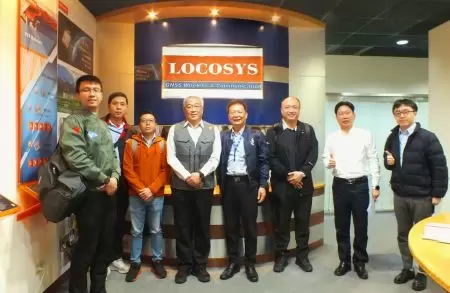 台湾卓越无人机联盟参访大辰科技领先企业 聚焦全球定位技术与无人机应用
台湾卓越无人机联盟参访大辰科技领先企业 聚焦全球定位技术与无人机应用 LOCOSYS大辰科技参加新北电动车产业链博览会展现领先智慧定位技术
LOCOSYS大辰科技参加新北电动车产业链博览会展现领先智慧定位技术 LOCOSYS大辰科技推出全新高性能SONY (GNSS/RTK) 全球卫星定位模组
LOCOSYS大辰科技推出全新高性能SONY (GNSS/RTK) 全球卫星定位模组
